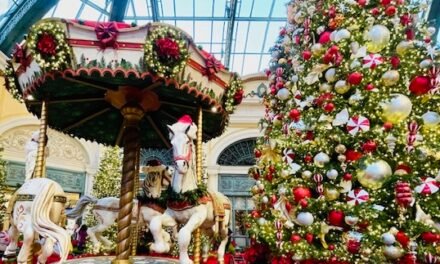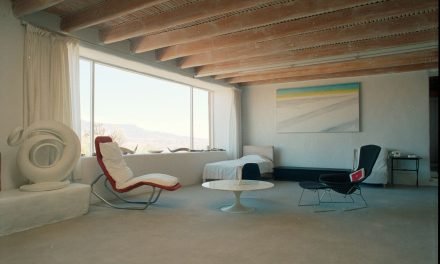
Pop Art Myths

This summer, the Museo Thyssen-Bornemisza is presenting Pop Art Myths, the first exhibition on this subject in Madrid since Pop Art at the Museo Reina Sofía in 1992. More than twenty years later, the exhibition’s curator Paloma Alarcó, Head of Modern Painting at the Museo Thyssen-Bornemisza, will offer a reassessment of this artistic trend from a 21st-century viewpoint. Featuring more than 100 works ranging from pioneering British Pop Art to the classic American version and its expansion into Europe, the exhibition aims to trace the shared sources of international Pop Art and to undertake a revision of the myths that have traditionally defined the movement. It will reveal how the legendary images created by artists of the stature of Warhol, Rauschenberg, Wesselmann, Lichtenstein, Hockney, Hamilton and Equipo Crónica, among many others, conceal an ironic and innovative code of perception of reality and one that still prevails in contemporary art today. The exhibition is sponsored by Japan Tobacco International (JTI) and will include works from more than fifty museums and private collections around the world, with important loans from the National Gallery of Washington, the Tate, London, the IVAM, Valencia, and the prestigious Mugrabi Collection in New York, to name but a few.
More than any other modern art movement, Pop immediately captured the popular imagination. Its emergence in the late 1950s and early 1960s represented one of the most liberating moments in art history. Furthermore, it was not only attractive to the general public, as the radical nature of its challenge and its connections with underground culture also appealed to numerous intellectual circles. In contrast to the widespread weariness at the time with the idealism of the modern movement, characterised by its introspective, utopian nature, Pop Art offered the new generations an exciting, secularised world in which there were no longer any boundaries between the artistic and the everyday. For Pop, every image was recyclable, every object could be transformed into art and its true aim, which time has demonstrated to have been achieved, was that of offering a new interpretation of the image of contemporary culture.
In contrast to other thematic exhibitions on this movement and the retrospectives on some of its leading artists that have taken place over the past few years and which have presented Pop as the forerunner of numerous artistic trends, the approach offered by the exhibition’s curator is to connect Pop with the past tradition of painting and to highlight these links, revealing them through the Museum’s own Permanent Collection, which concludes its survey of more than 700 years of the history of painting with works by some of the leading names of Pop.
The great paradox concealed within Pop Art lies in the combination of its desire for rupture and its respect for the art of the past. The structure of the exhibition aims to make that connection evident, with galleries organised according to the classic genres of portraiture, still life, history painting and landscape, displaying the work of leading figures of American and British Pop alongside that of Spanish, Italian, German and French artists who shared a similar attitude.
Collage, Advertising, Comics
The Independent Group was founded in Britain in 1952, comprising critics, architects and artists and based around the Institute of Contemporary Arts in London. It aimed to stimulate artistic debate and to reflect on objects and images from popular culture, encouraging the creation of works that moved away from both the languages of the European avant-gardes and from American Abstract Expressionism. While it is generally considered that it was the critic Lawrence Alloway who coined the term “pop”, it was Richard Hamilton, another member of the group, who first introduced the term into his famous collage of 1956 entitled Just what was it that made yesterday’s homes so different, so appealing? and who, one year later, would define it as an art that is “popular, transient, expendable, low-cost, mass-produced, young, witty, sexy, glamorous and Big Business” in a letter to his fellow group members, after which it became their guiding concept.

Roy Lichtenstein. Mr. Bellamy, 1961. Collection of the Modern Art Museum of Forth Worth, The Benjamin J. Tillar Memorial
Trust, acquired from the collection of Vernon Nikkel, Clovis, New Mexico, 1982
Included at the start of the exhibition is a 1992 version of Hamilton’s famous collage, in which a body- builder holds up an enormous lollipop with the word “POP” (part of the name of American Tootsie Roll Pop sweets) in a modern interior featuring a TV set, a framed comic, a tape recorder and a vacuum cleaner, among other items, all of which represent an ideal world of domestic items of consumer culture only to be seen in England at that date in American magazines. The Scottish artist Eduardo Paolozzi was also part of this group of pioneering British Pop artists. Between 1947 and 1952 he produced his series Bunk!, of which three are included in the exhibition. Made from glossy American magazines, comic strips and adverts, they reflect the same approach of transforming American glamour into an ironic image. Hamilton and Paolozzi’s collages launched Pop Art, which did not appear in the United States until the early years of the following decade.
Andy Warhol emerged as an artist via advertising and comics, working as an illustrator and advertising designer for publications such as Glamour and Harper’s Bazaar and for Miller Shoes. Around 1960 and following parallel paths, both Warhol and Roy Lichtenstein began to represent characters from comics in their paintings, enlarging the comic strip images and transforming them into large-format compositions. Using images and techniques from comic strips (with their characteristic grid of stencilled dots known as the Ben-Day technique but applied manually), Lichtenstein rebelled against the painterly gesture and texture of his Abstract Expressionist predecessors and explored the complex connections between art and popular culture. While at first sight these seem nothing more than enlarged comic strip images, a careful analysis reveals a unique and highly personal portrait of the new America. Look Mickey, Forget It! Forget Me! Vicki or Mr. Bellamy, which open the exhibition, are outstanding examples of how Lichtenstein transformed banal images into authentic examples of art.
Emblems
From the mid-20th century onwards, the rapid growth of the mass media flooded everyday life with slogans and brand names that were endlessly repeated on television, in the press and on luminous billboards. As might be expected, they became an unlimited source of visual ideas for Pop artists. From Jasper Johns and Peter Blake’s famous “Targets” to Warhol’s brand names, these signs and symbols filled Pop Art.
The exhibition includes works of the importance of Green Target by Johns, Big Torn Campbell’s Soup Can (Black Beans) and Brillo Soap Pads Box by Warhol, together with others such as Epiphany by Richard Hamilton, Coca-Cola by Mario Schiafano and The Electric EAT by Robert Indiana. It also includes S&H Green Stamps, in which Warhol transformed an everyday item into a symbol. With that series, together with others on postage stamps and dollar bills, Warhol moved away from Johns’s gesturalism through the use of repetitive, mechanical compositions, covering the entire surface of the canvas by stencil or photomechanical silkscreen and thus introducing the concept of repetition that would become his trademark. A similarly serial approach is to be found in Pool Mantra by Joe Tilson, another pioneering figure of British Pop Art who explored the artistic potential of the grid as a resource in his compositions constructed from words.
Myths
Hollywood was a myth-making machine and the Pop artists used many of these myths as motifs: the Italian Mimmo Rotella portrayed Elizabeth Taylor as Queen of the Nile in Cleopatra while Ray Johnson, one of the first artists to include music and film stars in the small collages that he produced in the 1950s, immortalised Marlon Brando and James Dean. British artists also combined the media power of the great American idols with specific aspects of their own popular culture, creating works on British myths such as The Beatles and the Rolling Stones (The 1962 Beatles, by Blake; Release, by Hamilton).

Peter Blake. The 1962 Beatles, 1963-1968. Pallant House Gallery, Chichester, UK. Wilson Gift through
The Art Fund 2006
Rather than making portraits, Warhol fabricated icons, transforming the identities of his sitters into a frozen, de-personalised image through his manipulation of photography. In his portraits of Marilyn Monroe and other celebrities whom the general public had transformed into myths, Warhol offered an innovative approach to the relationship between image and prototype through the new technique of photomechanical silkscreen. In addition, as evident in Marilyn Monroe in Black and White (Twenty-Five Marilyns), the permanent repetition of the image further enhanced the power of the mythical figure, now transformed into an object of veneration.
Portraits
The emergence of Pop Art gave rise to a new interpretation of portraiture. The media and mechanical techniques changed the relationship between individual subjectivity and collective consciousness and artists surpassed the limits of the original when reinterpreting pre-existing images. What arose was a new and meditated commitment with the very idea of the image, which could be interpreted as a questioning of individuality in favour of the stereotypical or anonymity.

Andy Warhol. Self-Portrait Strangulation, 1978. Tate: ARTIST ROOMS Tate and National Galleries of Scotland. Lent by Anthony
d’Offay
Andy Warhol created another version of himself based on simulation. Not only did he change his name but he also erased his past and transformed his physical appearance. In his innumerable self-portraits he thus masked himself behind different images that replace the real one. From 1968 onwards Warhol introduced a reflection on death into his painting and his new self-portraits became veritable memento mori. The exhibition includes a significant number of these, such as Self-Portrait Strangulation and Self-Portrait with Skull.
Pop Art portraits frequently make use of photographs and magazine images in their creation. This is the case with Self-Portrait with Blue Guitar by David Hockney, Portrait of David Hockney in a Hollywood Spanish Interior by Peter Blake, and Reflected Man by Allen Jones.
Landscapes, interiors, still lifes
Together with portraiture, Pop artists also evolved their own particular interpretation of landscape, interior views and the still life, transforming art history into an inexhaustible image bank. Impressionist and Expressionist landscape and the American landscape tradition came together in Pop’s mechanised vision, evident for example in Yellow Sky by Roy Lichtenstein or Ed Ruscha’s urban landscapes, which were inspired by the large cities on the American West Coast.
Both interior views and the still life emerged in 17th-century Holland as independent pictorial genres. In the Pop era, the traditional interiors of Dutch painting, in which the space is logically constructed from geometrical forms then manipulated by the painter in order to fabricate metaphors on everyday life that transmit moral concepts, became the modern domestic interiors by Patrick Caulfield and Valerio Adami to be seen in the exhibition.
However, the genre that enjoyed a new Golden Age under Pop Art was undoubtedly the still life. In the Pop era objects are to be found everywhere, in consumer products, in magazine illustrations, in advertising, etc, becoming a communicatory symbol. The domestic, private space of the traditional still life and the artificial composition constructed by the artist in the studio in early avant- garde examples now becomes a commercial, public space. Still Life # 34 by Tom Wesselmann, Untitled (Vase II) by Sigmar Polke, Three Machines by Wayne Thiebaud, Cup of Coffee by Lichtenstein, Kleenex Box by Allen Jones, and Pancakes and Sausages by Claes Oldenburg are just some of the outstanding examples brought together in this gallery. They reveal to what extent Pop Art made the objects and symbols of consumer culture visible, elevating them to the category of icons of modern life.
Urban eroticism
The profound change of attitudes and social norms introduced by the sexual revolution affected all areas of life in western society. As a result, the media became inundated with erotic metaphors involving seductive women and attractive men, which were immediately assimilated into Pop’s visual repertoire. Hamilton’s famous collage already featured an overt reference to the new body culture and to the artificial sensuality of the pin-up girl on the sofa. Richard Lindner, Allen Jones, R.B. Kitaj, Tom Wesselmann, James Rosenquist, Andy Warhol and numerous other artists associated with Pop Art participated in the exhibition Erotic Art 66. Held that year at the Sidney Janis Gallery in New York, it aimed to emphasise the obsessive presence of the new society’s eroticism in art.
Here again, the iconography of advertising and the mass media was one of the principal sources of inspiration. Among the most frequently recurring themes was the image of the woman as a publicity device and consumer object, as in the work of James Rosenquist with his seductive women depicted in bright colours, smiling or smoking, or Tom Wesselmann and his modern Odalisques from his series Great American Nudes, in which the artist only used the colours of the American flag and other national symbols such as the stars and stripes, as well as photographs and historical portraits.
Also present in the exhibition is the vision of female sexuality from a woman’s viewpoint, exemplified in the work of Pauline Brody; the emergence of eroticism in comics with Roy Lichtenstein; David Hockney’s homoerotic images; and the satirical vision of consumerism and the banality of appearances in the German artist Gerhard Richter’s images. The same satirical note is to be found in the eroticised world of Richard Lindner, an artist of German origin. Lindner’s distinctive pictorial language with its bright, colourful palette, conceals a mordant social critique of the de-humanisation of modern life.
History Painting
Historical events or significant contemporary ones were equally crucial for Pop iconography. The legacy of history painting and the profusion and immediate dissemination of any news event through the media offered artists a unique opportunity to reassess and reinterpret present and past events through the new artistic media.
Andy Warhol was a true chronicler of his times: man’s arrival on the moon or Kennedy’s assassination through the depiction of his widow Jackie are some of the examples on display in this gallery. The patriotism that arose from the desire to reinforce American identity in the post-war period and the precarious balance of world power are issues that appear in the work of artists such as the American Robert Rauschenberg (Retroactive II), the Italian Mimmo Rotella (Viva America), and the Swede Öyvind Fahlström (Red Seesaw).
In Spain, the absence of a legitimate democracy under the Franco regime gave rise to increasing political conflict and social discontent, which was also reflected in art. Eduardo Arroyo’s painting and that of Equipo Crónica represents an ironic attack on the system and on the collective historical amnesia that characterised Spain at this period, while Juan Genovés’s The Embrace became the quintessential image of the amnesty and a symbol of the Transition.
Art About Art
With the rise of Pop, for the first time the art of the past became an artistic motif as well as a way to incorporate pre-existing images and pose questions on the evolution of the contemporary gaze on artistic representation.
The works of the Old Masters soon began to be reproduced using photo-mechanical techniques by Rauschenberg, Wesselmann and Warhol. David Hockney’s Renaissance Head, a Pop version of a typical 15th-century profile portrait; Luncheon on the Grass, Alain Jacquet’s interpretation of Manet’s famous painting; The Living Room, an adaptation by Equipo Crónica of Velázquez’s Las Meninas; Dressed Man Descending a Staircase by Eduardo Arroyo, which is a parody of Duchamp; Man in a Museum (or You’re in the Wrong Movie) by Hockney; and Girl with Tear III by Lichtenstein are some of the works that conclude this survey, exemplifying these artists’ rethinking of the art of the past.
ASSOCIATED ACTIVITIES
In conjunction with the exhibition, the Museum has organised a wide-ranging calendar of activities. Together with the agreement it has reached with the Museo Reina Sofía to offer a combined ticket that includes entry to the latter’s retrospective on Richard Hamilton, the result will be a true “Pop Art
summer” in Madrid.
“Pop Art Study Days”: a scholarly encounter has been scheduled for 10 and 11 July, which will debate the issues proposed in the exhibition by its curator Paloma Alarcó. These Study Days will benefit from the participation of art historians, university professors, museum professionals and artists, including Guillermo Solana, Francisco Calvo Serraller, Tomàs Llorens, Valeriano Bozal, Thomas Crow, Bernardo Pinto de Almeida and Darío Villalba.
Film cycle: on Saturdays from June to September the Museum will be showing a series of films associated with the Pop movement, including Rebel without a Cause (1955) by Nicholas Ray, The Wild One by László Benedek (1953) and Forbidden Planet (1956) by Fred Wilcox. Films will be shown in their original language. Free entry until all seats filled.
Pop Art concerts: a number of musical events in conjunction with the exhibition are also programmed for this summer, aimed at both the adult public and children. Free entry in all cases.
EXHIBITION INFORMATION
Title: Pop Art Myths
Organiser: Museo Thyssen-Bornemisza
Venue and dates: Madrid, Museo Thyssen-Bornemisza, 10 June to 14 September 2014
Curator: Paloma Alarcó, Head of Modern Painting, Museo Thyssen-Bornemisza
Technical curators: Marta Ruiz del Árbol and Carlota Luelmo, Department of Modern Painting, Museo Thyssen-Bornemisza
Number of works: 103
Publications: catalogue with texts by Paloma Alarcó, Francisco Calvo Serraller and Thomas Crow, published in Spanish and English editions, 38 euros in Softcover and 42 euros in Hardcover; short explanatory guide; digital publication on the Quisco Thyssen app for tablets and smartphones, in English and Spanish; comic book, Myths of Pop by Miguel Ángel Martín, inspired by the exhibition.
VISITOR INFORMATION
Address: Museo Thyssen-Bornemisza, Paseo del Prado, 8. 28014 Madrid
Opening times: Tuesdays to Saturdays, 10am to 10pm. Mondays and Sundays, 10am to 7pm. Last entry 1 hour 30 minutes before closing time.
Ticket prices:
Temporary exhibition:
• Standard ticket: 11 Euros
• Reduced price ticket: 7 Euros for visitors aged over 65, pensioners, students with proof of sta- tus and Large Families
• Free entry: children aged under 12 and unemployed Spanish citizens with official proof of sta- tus
Temporary exhibition + Permanent Collection:
• Standard ticket: 17 Euros
• Reduced price ticket: 9 Euros
• Free entry: children aged under 12 and unemployed Spanish citizens with official proof of sta- tus
Entradas #MadridEsPop: combined entry ticket for the exhibition Pop Art Myths (Museo Thyssen- Bornemisza) and Richard Hamilton (Museo Nacional Reina Sofía, 27 June to 13 October), with the collaboration of the City Council of Madrid: 13 Euros.
Pre-purchased tickets at the Museum’s ticket desk, on its website and on tel: 902 760 511
Audioguide in various languages.
More information: www.museothyssen.org






































